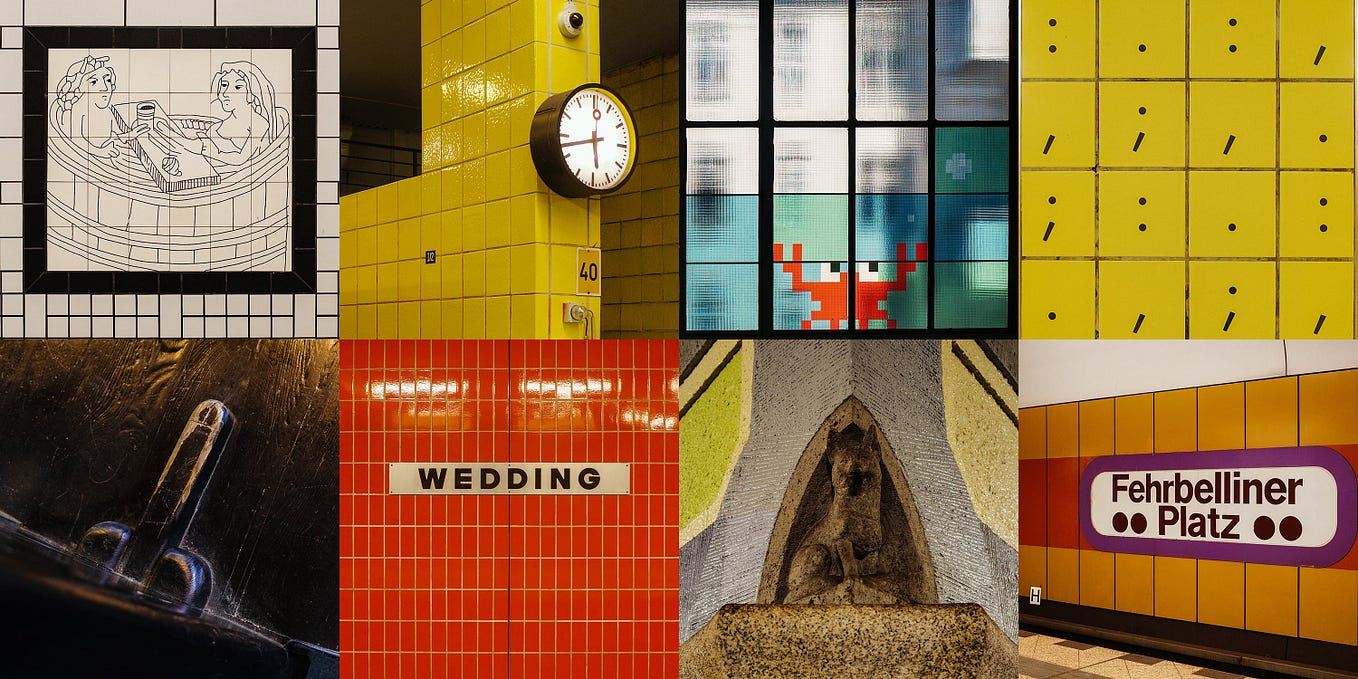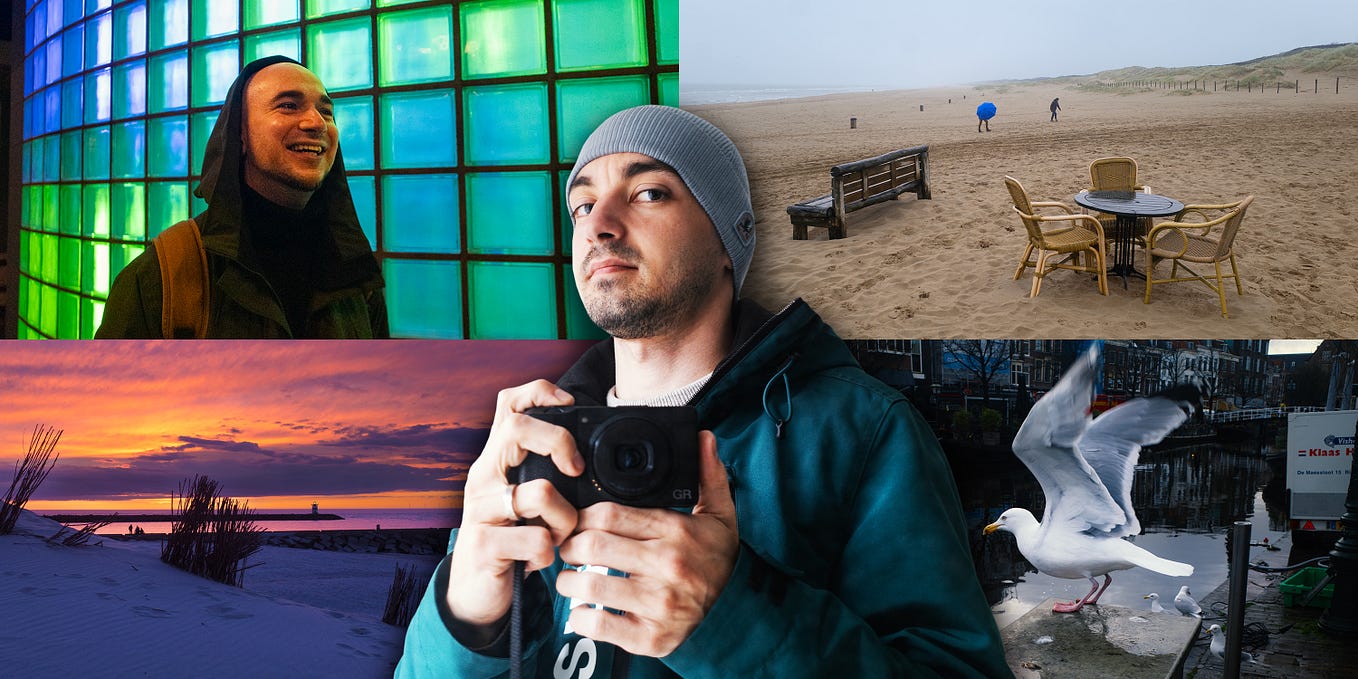ARCHITECTURE
17 oldest buildings in Lviv: from Romanesque to Renaissance
Figuring out ancient architectural styles “in the fields”
Tourists admire Lviv as a whole but rarely understand the value of each piece, including some of its oldest buildings, which are just a 10-minute walk from the crowded center. So, I decided to gather the most valuable sites and explain their connection with Ukrainian history.
13th century — High Middle Ages
A time of the Fourth Crusade and the rise of the Mongol Empire led by Genghis Khan. The largest country in Eastern Europe was Kyivan Rus, an ancestor of modern Ukraine. Suppressed by the Mongol invasion, Rus eventually broke up, and another state arose there — the Kingdom of Galicia–Volhynia — and Lviv was one of its capitals.
Architecture. In 988, Kyivan Rus converted from Paganism to Orthodox Christianity and adopted the architectural style of the Byzantine Empire, which was the Orthodox “headquarters” at that time. One can distinguish Byzantine buildings by:
- large heightened domes;
- intricate and colorful mosaics;
- cross-shaped buildings with a central dome.
Romanesque was widely spread in Western Europe and widely present in medieval Lviv. You can recognize this style by:
- barrel vaults and crossed vaults;
- round arches and arcades (arch patterns);
- simple gable or conical roofs.
1. St. Nicholas Church (13th century)
Not only is St. Nicholas Church the oldest building in Lviv, but it also served as the main temple for the Kings of Galicia-Volhynia — a kingdom that emerged as a successor of the collapsed Kyivan Rus and occupied the western part of present-day Ukraine.
Archeologists say the church must have existed in the 13th century, although the exact year remains unknown. The building is attributed to King Leo, the founder of Lviv, or his father, Daniel. The church stands on an ancient cemetery and might have replaced an older wooden temple.
The church was twice rebuilt after the fires of 1623 and 1800, but you can still notice elements of the original design: a cross-shaped building layout, thick stone walls (especially the rear part), and a central dome.
Unfortunately, the interior didn’t survive fires and robberies; both inner decoration and facade frescos belong to modernity.
2. St. John the Baptist Church (13th century)
The second oldest building in Lviv looks like a tiny chapel. There is no reliable information about its foundation, but due to a popular legend, King Leo built this church for his wife, Constance of Hungary.
Sadly, the initial church design was radically modified in the 1880s. Only the rear part exposes the medieval fashion, whereas the front facade completely lost its ancient character.
3. St. Paraskeva Church (13–14th century)
This church was built on the outskirts, which explains its defensive character: a tower with embrasures and 2-meter-thick walls.
St. Paraskeva Church was restored after the fire of 1623 and modernized in the 19th century. The latter renovation resulted in the current tower design with a tall cupola and four turrets.
The church’s most valuable property is a Renaissance altarpiece created by Lviv painters and woodcarvers in the 16–17th centuries. This astonishing artwork consists of 70 icons arranged in six rows.
But the oldest treasure of the church was the 16th-century handwritten Gospels, which are now exhibited in the National Museum.
4. Our Lady of Perpetual Help Church (13–14th century)
This church was first mentioned in 1344, but another ancient document describes its extensive possessions, hence an assumption it might have existed before the first written mention.
In the 14th century, Lviv was surrounded by a defensive wall encompassing the present-day historical center. Our Lady’s Church found itself outside, so it got its own wall. The church’s rectangular front part implies a tower’s existence in the past, but this hypothesis isn’t confirmed.
Hardly anything is known about the original decoration. The building was substantially rebuilt after the 17th-century fires; its interior completely changed many times. Soviet authorities used the church as a warehouse and atheism museum.
5. Armenian Cathedral of the Assumption of Mary (1363–1370)
Unlike the churches above, this cathedral is a unique sample of the Armenian national style, not typical for Ukraine.
Medieval Armenian churches had the following features:
- vaulted ceilings;
- prominent, often octagonal, central domes;
- ornate stone carvings and frescoes.
Now let’s take a look at the building itself.
An Armenian merchant from Caffa (modern Feodosia in Crimea) founded a small church in Lviv, and in the following centuries, it was expanded and rebuilt. The temple is said to resemble the Cathedral of Ani from the ancient capital of the Armenian Kingdom.
Each century of the cathedral’s existence brought something new to its design. At first, it was surrounded by an arcade gallery, which survived only on the southern side. The bell tower was added in the course of restoration after the city fire of 1527. The latest renovations, including the interior murals, were completed in the 1930s.
Like historical architecture? Then follow my Instagram with architecture photos every day — from 🏰 Gothic to 🏢 Modernism.
14th century — Late Middle Ages
The deadliest pandemic in history, the Black Death, wiped out one-third of the European population. Eastern Europe was ruled by the Golden Horde, the division of the Mongol Empire. When the Golden Horde weakened, modern Ukraine’s territory ended up split between the Kingdom of Poland, the Grand Duchy of Lithuania, and the Grand Duchy of Moscow.
Gothic architecture. One can recognize Gothic religious buildings without a single prompt, but let’s recall their features anyway:
- pointed arches;
- tall designs with towers;
- vaulted ceilings;
- ornate facades with elaborate stained glass windows.
6. Archcathedral Basilica of the Assumption of the Blessed Mary (1360–1481)
Colloquially known as the Latin Cathedral, this church is the best-preserved Gothic building in Lviv and probably the only Ukrainian building of such size that has kept its authentic Gothic exterior over time. This cathedral is so well-known that people almost stopped noticing it.
A wooden church stood in this place for only six years until it was destroyed in a fire. The cathedral’s construction started soon thereafter on the orders of Polish King Casimir III the Great. At that time, Lviv and modern Ukraine’s north-western lands became part of the Kingdom of Poland.
It took more than a century to finish this huge building — yet one of the towers stayed incomplete. The sides of the cathedral are augmented with 8 chapels. There were more chapels of diverse designs in the past, but in the course of the 18th-century renovation, some of them were dismantled. The Baroque tower top was added at about the same time.
Another Polish king, John II Casimir, was a great fan of this building and made his famous Lviv Oath here in 1656. At that time, the Polish–Lithuanian Commonwealth found itself gripped between two invading forces — the Swedes and Muscovy. So, John II Casimir arranged a grand ceremony of entrusting the Commonwealth under the Virgin Mary’s protection and swore to defend the kingdom’s folk from unjust treatment. However, the king fulfilled only the first part of his promise because of the nobility’s resistance.
15–16th centuries — Renaissance
Cultural and economic rebirth following the Middle Ages. It was the time of famous artists and polymaths da Vinci and Michelangelo. Dante wrote his “Divine Comedy” with the iconic portrayal of hell. Columbus discovered America. Gutenberg invented book printing with movable type. Copernicus declared the Sun moved around the Earth and not vice versa. As for most of present-day Ukraine, it was called Ruthenia and remained part of the Polish-Lithuanian Commonwealth.
Architecture. One can recognize the Renaissance style by:
- massive top eaves;
- richly decorated gates and windows amid almost plain walls;
- rustication — the texture of stone masonry;
- pilasters — flat imitation of columns instead of actual columns.
7. Monastery of St. Onuphrius (15–16th century)
The monastery was founded under King Daniel in the 13th century and had a wooden church. The first known construction works of the modern stone temple are dated 1550, but recent masonry analysis suggests it could have been just a major overhaul of an older building.
Originally, there was a church and a chapel attached to its northern side — each with a separate entrance. A bit later, the sections were merged, and in 1902, the building was augmented with the second chapel, thus obtaining its modern symmetrical layout.
The monastery was fortified in the past. Its original bell tower, erected in 1554, played the role of the main gate and, fitted with cannons, also served for defense. Unfortunately, it was replaced with a new one in the 19th century.
The monastery’s history is connected with Ivan Fedorov, one of the first book printers in Eastern Europe and the founder of printing in the Grand Duchy of Moscow. In 1563— roughly a century after Johannes Gutenberg had invented printing in Germany — Fedorov created his first book, “Apostolos.” But soon, Moscow scribes started persecuting the printer because hand-copying couldn’t compete with technology.
Fedorov fled to Lviv and resumed his work in St. Onuphrius Monastery. He published the Alphabet book and reissued “Apostolos.” At the request of Prince Ostrogski, Fedorov also created the first complete printed edition of the Bible in Old Church Slavonic, the so-called Ostrog Bible. Fedorov was buried on the grounds of the monastery.
8. Gunpowder Tower (1522–1537)
Large cities — due to their fast growth — rarely boast about well-preserved fortifications. Lviv is no different: only one defensive structure out of twenty has survived by now, the Gunpowder Tower.
This horseshoe-shaped tower consisted of 3 floors, but the third overhanging level didn’t survive. As the most powerful point of Lviv’s defense, the building had 2–3-meter-thick walls and faced the east — a direction that invaders were usually coming from.
In the 1950s, the tower underwent a renovation, and two marble sculptures of lions were installed at the entrance — they were taken from a ruined mausoleum of German colonist Miller. Some decades later, restorers opened embrasures, removed the plaster, and bricked makeshift windows to reveal the tower’s historical look.
9. Mykolaievychi House (the 1550s)
Due to my humble research, this is the oldest residential building in Lviv that has preserved its Renaissance style throughout history, especially a gorgeous entrance portal. Mykolaievychi House was designed by an architect of Italian descent known as Peter the Italian. The building used to be two-storied before 1712, and now it has 3 floors on different levels.
Not a long time ago, this house was decorated with the sculptures of Jan Zeh and Ignacy Lukasiewicz — Lviv citizens who invented the kerosene lamp in 1853. Not only did they find how to distill kerosene from crude oil, but they also suggested a new lantern design. Kerosene lamps replaced medieval olive and animal fat lamps.
10. Scholz-Wolfowicz House (1570)
The Scholz-Wolfowiczs were one of the wealthiest families and owned several houses on Market Square, Lviv’s most prestigious area.
This particular house is valued for its authentic German Renaissance style. Luckily, the most serious change this house underwent was altering the entrances in the 1930s.
An interesting detail: The main facade facing Market Square is pretty narrow, whereas the side fronting the cathedral is almost a quarter wide. Why? The medieval development of Market Square was strictly regulated — all plots of land had equal width, that’s why almost all the houses on the square have not more than three windows in a row.
11. Korniakt Tower (1572–1578)
Konstanty Korniakt was a wholesale merchant of Greek descent who traded wine, cloth, honey, and fur. He moved to Lviv (at that time, the Kingdom of Poland) in the 1560s and became the city’s wealthiest citizen. The Polish king granted Korniakt a noble title and many privileges.
As a fervent supporter of Orthodox Christianity, Korniakt co-financed the construction of the Dormition Church and its iconic Renaissance bell tower. Initially, the tower was adorned with the largest bell in Galicia.
Korniakt Tower suffered from fires: at first, in 1616, then during the Turkish siege of 1672, and again in 1779. In the course of restorations, the building’s top gained its present-day Baroque shape and nowadays is 66 meters high, not counting the cross.
Besides architectural value, the tower was the headquarters of the Lviv Dormition Brotherhood, an influential Orthodox organization in the 16–18th centuries and the oldest of its kind in Ukraine. Many notable educators, scientists, and artists belonged to the Brotherhood.
12. Black House (1577)
This exquisite mansion belonged to a pharmacist who founded one of the first drugstores in Lviv. Like most buildings on Market Square, the Black House had a Gothic predecessor: researchers found a half-erased text, “1452,” in the cellar.
The 19th-century restoration turned out to be savage — the fourth floor was added, and the house changed its appearance. Fortunately, a new owner was smart enough to revive the original design in 1911.
You might be surprised that Black House gained this nickname only in modern times when soot and dust blackened its sandstone walls. You can see the house’s natural color through a couple of unpainted spots.
13. Korniakt Palace (1580)
Apart from the bell tower, Korniakt also built an elegant Renaissance palace. The palace is twice as wide as other houses on Market Square: It occupies plots of two former Gothic houses, which either collapsed or were dismantled to free up space for Korniakt’s project.
Soon after Konstanty Korniakt had died, his heirs went bankrupt and sold the house. Eventually, the palace was taken over by Polish King Jan III Sobieski. By the way, it was not just a random monarch. He led the Allied troops in the victorious Battle of Vienna (1683) and made history as the savior of Western Europe from the Turkish invasion.
After the “royal period,” this gorgeous Renaissance building suffered from brutal redesigns. Fortunately, restorations of the 1930s returned the palace to its authentic look as much as possible.
14. Bandinelli Palace (1589)
This house is the best example of the Late Renaissance. It’s called after Bartolomeo Bandinelli, a Florence merchant who founded a post office in 1639 and was appointed the royal postmaster.
After Bandinelli had gone bankrupt, the building changed owners several times and ended up in a state of severe disrepair by the 1970s. Its restoration took about three decades. Like in old good times, nowadays, Bandinelli Palace accommodates a post office.
15. Gepner House (late 16th century)
This building is colloquially known as the “house with proverbs” for the Latin sayings carved above the windows and doors.
Gepner House stands on top of the 14th-century basement, which preserved fragments of hypocaust — a medieval central heating system.
The house hasn’t changed much since construction. It has two 18th-century buttresses on the sides — supporting structures that saved it from destruction when the neighboring houses were rebuilt.
16. Venetian House (1589–1600)
This house was built for Antonio Massari, the consul of Venice in Lviv. Since the building had already been there, construction works affected only the facade. The entrance portal is topped with the Venetian lion — a well-known ancient symbol of the Venetian Republic.
In the 19th century, Venetian House underwent the most significant change — adding a fourth floor. You can easily distinguish it by the lighter color.
17. Benedictine Monastery (1597–1616)
This gorgeous Renaissance building housed not only a monastery but also the first women’s school for noble young ladies on the territory of present-day Western Ukraine.
Polish King Jan III Sobieski — the nephew of Abbess Dorota — was among frequent visitors of the monastery.
Benedictine Monastery was located behind the city walls like many other churches in Lviv, that’s why it has distinctive defensive features. Historians think the tower was added within the 1627 reconstruction after a fire because it was missing from the original plans.
Since you’ve scrolled all the way down, you owe me a round of 👏 applause, and don’t hesitate to 🔔 follow the 5 a.m. Magazine. Thank you!










